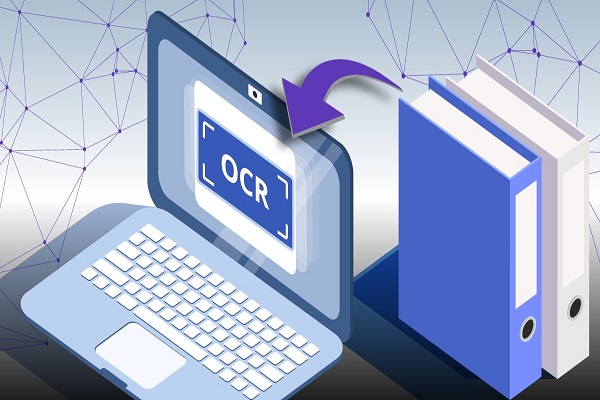Businesses deal with loads of documents on a daily basis across multiple business sectors ranging from the financial industry to the healthcare sector. Today, organizations are spending millions every year to process the information available manually. However, manual processes have drawbacks such as an increase in cost, unavoidable human errors, and wastage of time. But the major issue is that these documents are in the form of PDFs, images, word or excel documents that require data to be manually fed into the system. Hence, processing such documents and then extracting the relevant information is a hassle. The need of the hour is an innovative technology that assists businesses in all these processes.
OCR technology is a mesmerizing technology whether you want it for auto text extraction from a printed receipt or you want it to translate a foreign language.
How Does OCR Technology Deliver Outstanding Data Extraction?
With technological advancement, digital businesses are competing to provide the best services possible using the latest OCR solution. The manual process of data entry and documentation has been famous for taking long hours and hiring additional manpower. However, OCR technology has made these processes easier by automating data extraction. AI machine learning can obviously process data more accurately than humanly possible. The software aids in reducing errors significantly while it reduces the use of scanners and multiple other hardware devices.
Nowadays, even mobile applications are enabled to extract data from OCR applications which takes less time and less effort whatsoever.
The Process of OCR Technology
Different service providers have different ways they use OCR solutions, but the main concept is usually the same. Nowadays, artificial intelligence-based data extraction is extracting information by scanning, extracting, and then processing the information. These functions have enabled PDF documents and printed unedited text to be converted to rich text format.
Additionally, character recognition applications have allowed faster and more efficient data extraction. They have also allowed users to convert blur image text to appear clearer than the original picture.
Regarding the process at the backend, OCR technology separates the white spaces from the written characters and extracts those characters, hence storing them in the backend. The characters are then grouped into words and then sentences. If the application cannot understand a text, it looks at the surrounding words to formulate the best fit. In case OCR is still unable to detect the text, that’s where ICR technology jumps in. ICR technology is designed to read cursive handwriting using more advanced technology.
Advanced intelligent OCR technology can interpret the difference between “1” and “I” and place it accordingly.
Also Read>>>Voice Search Stats and its Rising Trends in the Digital World!!
AI in OCR services
Even though OCR technology is effective enough to detect and extract text, the incorporation of artificial intelligence provides additional accuracy. The combination of AI and NLP aids OCR solutions in identity verification.
Businesses adopt OCR document scanners to cut operating expenses and hardware utilization. In addition, data entry processes no longer require hiring humans, as AI is constantly learning and 'knows' which information has to be extracted and where it should be saved.
Pre-Processing
The data extraction step with OCR technology includes pre-processing functions such as brightness, contrast, and clarity adjustment of the scanned picture. These functions are beneficial for improving the readability of the document's content by reducing distortion.
Extraction of Data
OCR solutions then discriminate between the various characters and identify text blocks, lines, and paragraphs after the image has been clarified.
Post-processing
In the post-processing stage, machine learning algorithms in AI enable the intelligent detection of different font styles and sizes and the determination of the document's template.
Numerous Document Formats
It is possible to extract data from a variety of different sorts of documents using OCR technology, including:
Documents that are Structured
These are documents that are generated from pre-defined templates. Structured documents, such as government-issued identification documents, bills, and credit card receipts, contain extremely few formatting and spacing errors. Because the AI-based system is developed with established templates, OCR solutions enable efficient data extraction from structured documents.
Semi-Structured Documents
Semi-structured documents share some properties with structured documents, such as being able to extract information easily. However, these documents are not pre-formatted, such as grocery invoices or purchase orders.
Documents that are not Structured
Unstructured documents are those that do not adhere to a set template and are not easily understandable. The standardization level distinguishes semi-structured and unstructured documents.
Unstructured papers include legal agreements, which may vary in the order in which dates and other critical information are placed. In any event, OCR technologies can extract data from unstructured documents and contribute to the efficiency of the data input process.
Final Remarks
To summarise, optical character recognition (OCR) solutions are a critical component of the technological revolution ushered in by artificial intelligence. Continuous technological advancements provide organizations with additional technology for efficiency and precision. Similarly, OCR technology has aided in automating the process of document verification.

No comments:
Post a Comment